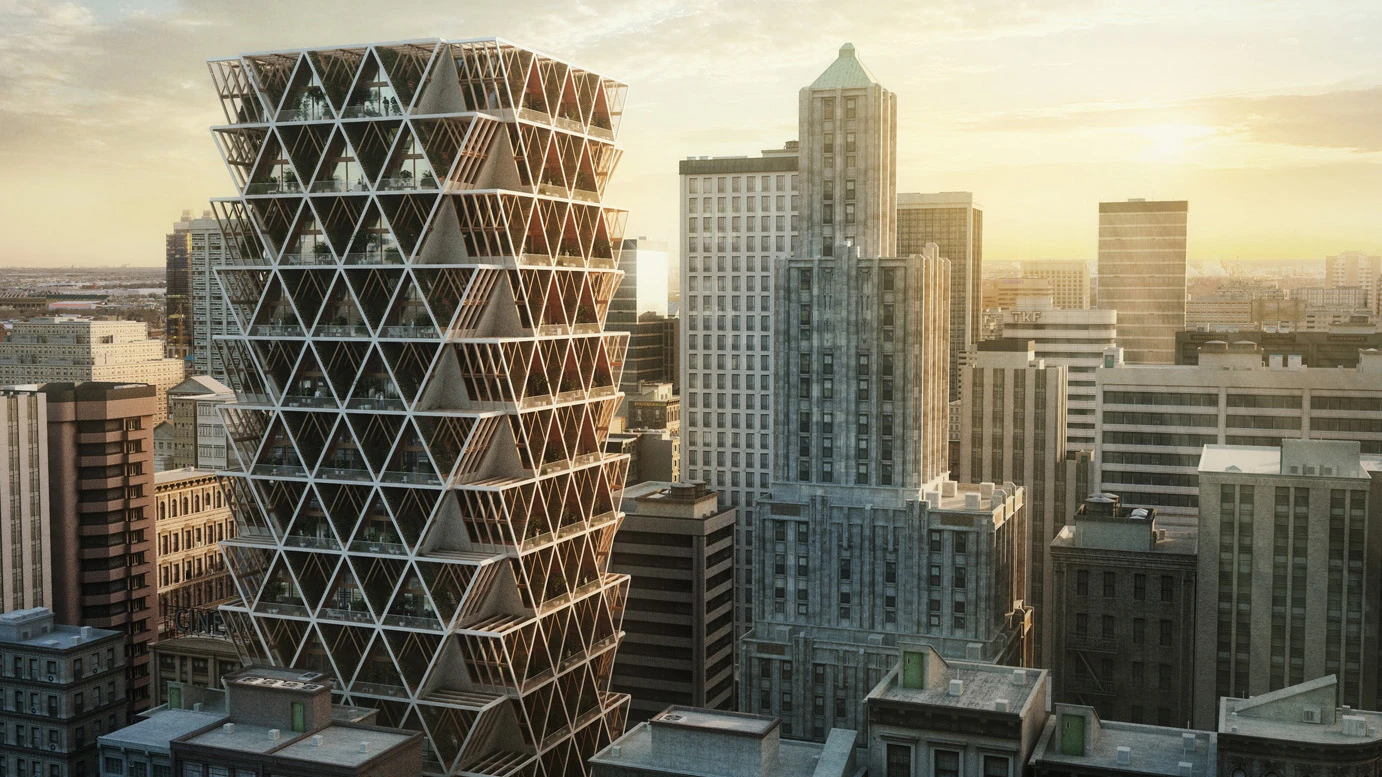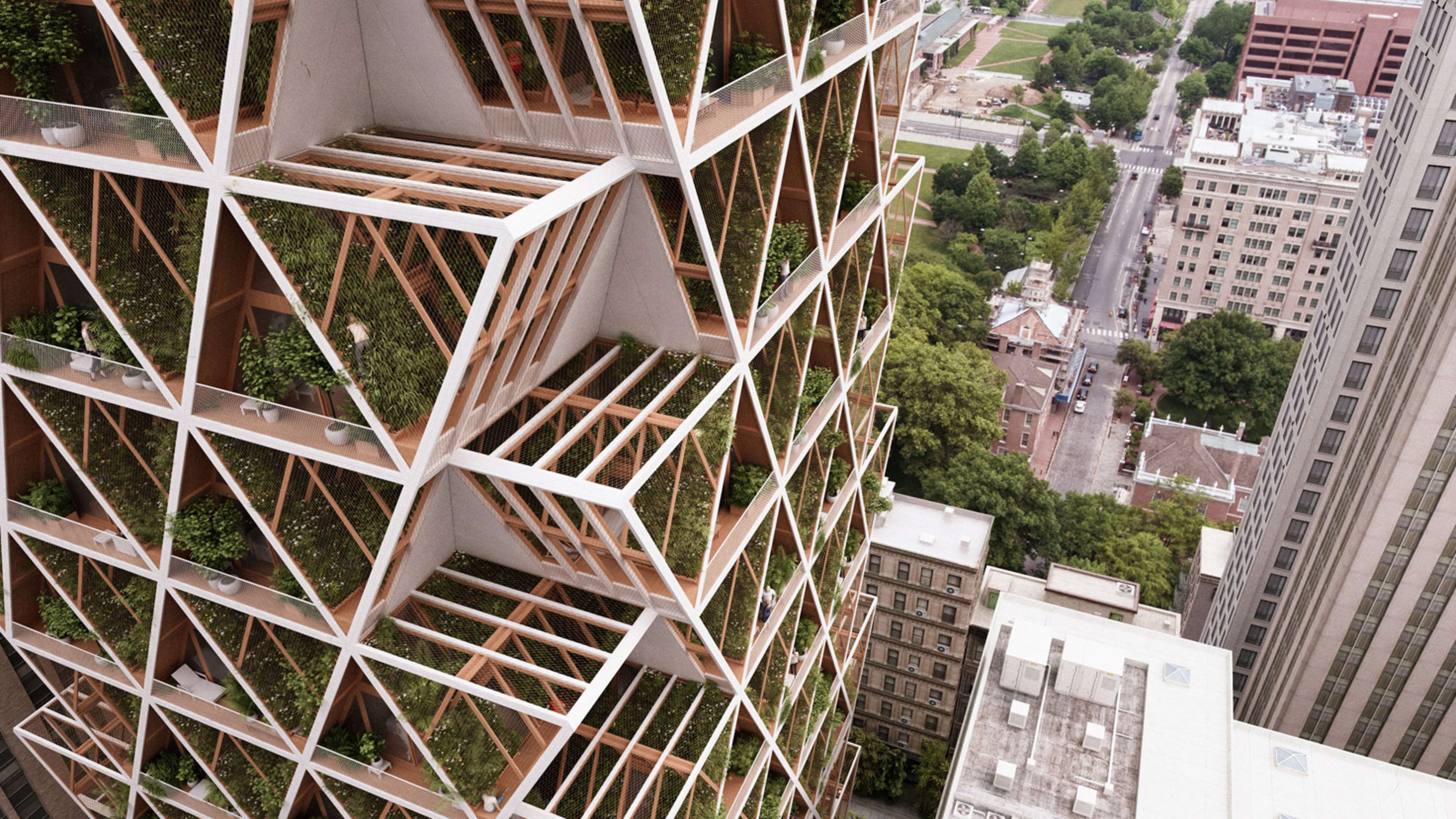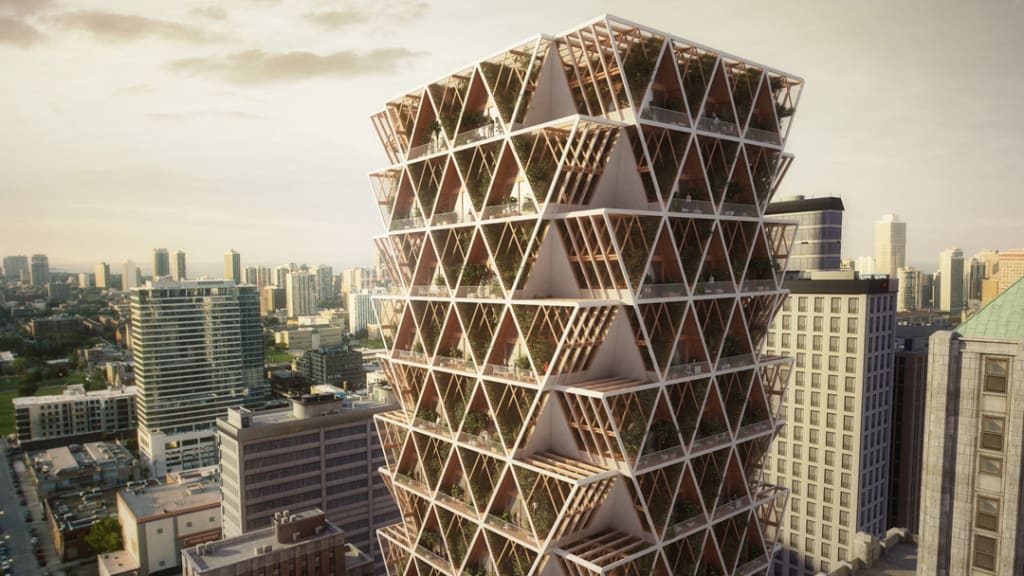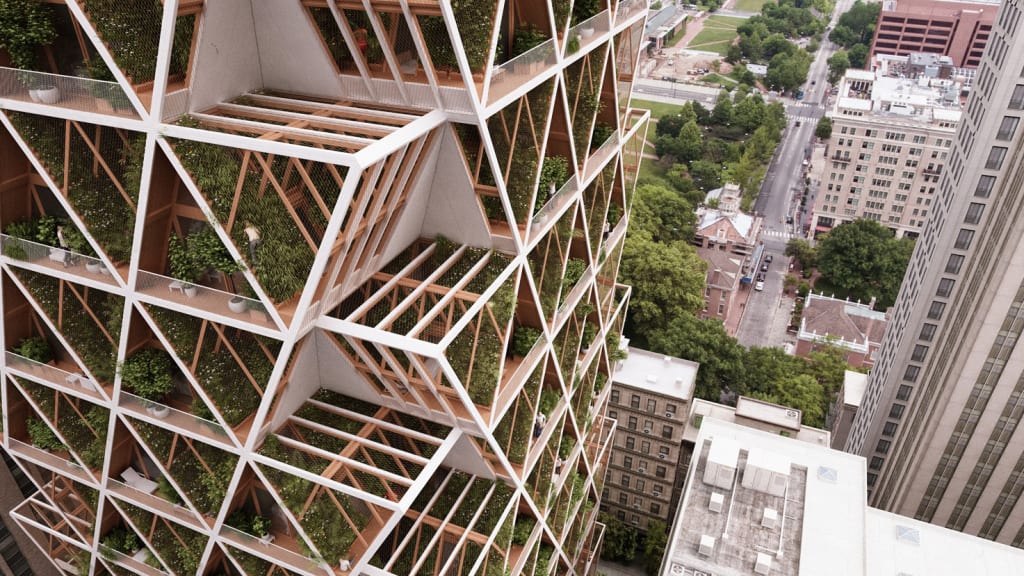In the design for this new apartment building, each kitchen connects to a massive greenhouse. If you need a salad for dinner, you can harvest it yourself, or go to a farmers’ market in the lobby to buy greens from a neighbor.
[Image: courtesy Studio Precht]The design is one variation on a modular system called Farmhouse—ranging from simple A-frame houses to multifamily buildings—intended to reconnect residents with the food system. The architects, from the Austria-based firm Studio Precht, were inspired by their own experience moving from Beijing to an off-grid life in the Austrian mountains that includes growing their own food. “It’s a very direct connection to nature,” says architect Chris Precht.
In the concept for the apartment building, waste heat from the building is used to help crops grow. Food waste is collected onsite, rather than trucked off to a landfill or industrial composting plant, and turned into compost for the gardens. A water treatment system can filter rainwater and wastewater from sinks and showers to send to the greenhouses. The building itself is made with cross-laminated timber, a material that uses less energy to make than standard construction materials like steel or concrete and that stores the carbon that was sequestered as trees grew.


“I am fully aware that a tower like our farmhouse is not solely the solution to feed 2 billion more mouths by 2050,” Precht writes in a description of the project. “This change needs to come from climate-appropriate agriculture, clean meat, and a boost for local, organic farmers. But I believe that it does something else important: It creates a visible and mental connection to food. It puts agriculture back to the center of our cities and back to the center of our minds. It creates a different typology of a tower that not only consumes from its surroundings, but also gives back to its environment. A tower that is not an isolated island in the city, but an integral component of a healthier and tastier city.”
Recognize your brand’s excellence by applying to this year’s Brands That Matter Awards before the early-rate deadline, May 3.



















